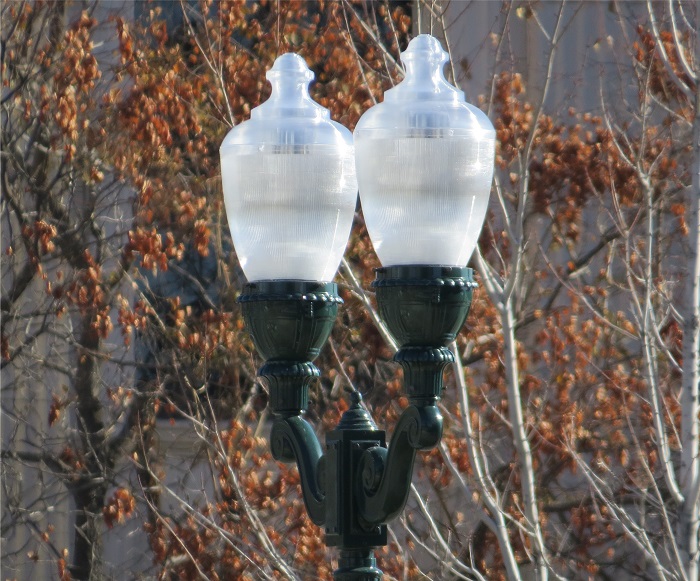 |
| I have, of late, found myself thinking about octagons, wondering if there was some symbolism. |
 |
| I made a new friend yesterday, and if you can believe it, the topic of octagons randomly came up. |
 |
| The roof of the pavilion is an octagon. We knew that already. |
 |
| Eight sides. That's the definition. |
 |
| Each of the four towers has a roof with an octagonal base. |
 |
| The base of the steeple roof is also an octagon. |
 |
| You might have forgotten that there is an octagon below the steeple base. This octagon is above the celestial room, and these steel sections will be filled with art glass. |
 |
| Symbolically, the octagon is known as a bridge between heaven and earth. |
 |
| A cube can represent earth, or a stable foundation. |
 |
| A dome represents the expanse of heaven. |
 |
| Many public and religious buildings have domes, including the Utah State Capitol. |
 |
| I found a dome, or at least an arch, at the temple this morning. |
 |
| The finials each have a dome. |
 |
| The finials share this theme with Moroni. |
 |
| We admire Moroni, but have we noticed the dome? |
 |
| The finial and Moroni's base were designed to be similar. |
 |
| The new lamps have domes. |
 |
| I suspect the domes in the finials, Moroni's base, and the lamps were all planned. |
 |
| An octagon can be the bridge between the dome and a cube by providing a structure where the dome can rest. |
 |
| The lower dome of the lamp rests on a hexagon, not an octagon. |
 |
| However, the concept is the same. |
 |
| Symbols can strike our hearts and completely bypass our brains. |
 |
| The statue of Moroni is a powerful symbol in LDS culture. |
 |
| The grounds will feature many circles. Planters on the north and south are circular. The walkways will also be circular. |
 |
| When Provo City chose lights for downtown, they were thinking of a particular style, not of symbols. |
 |
| Sometimes if we want to see the symbols, we have to look for the imagery. |
 |
| Interestingly, Nephi said he spoke in plainness, but then he used Isaiah's imagery. Meaningful symbols can pass through the generations and provide revelation to those who study the words of the prophets. |
 |
| Setting symbols aside, let's look at some images from this morning's visit. |
 |
| More fence posts on the north side. |
 |
| The wall around the mechanical building has been covered with plastic, and heated. |
 |
| Yuki Dorff took this picture over the weekend, before the plastic was in place. Notice the stacks of brick. |
 |
| My camera spied two rows in place above the sandstone watercourse. Provo has been enjoying freezing temperatures, not conducive to mortar curing. |
 |
| Geofoam around the pavilion is being sculpted. |
 |
| The driveway at the south entrance now looks useable. Sort of. |
 |
| The paint on the steeple base is dry. |
 |
| I watched the construction cam while putting up this post, and the scaffolding is coming down quickly! |
 |
| The windows which were recently delivered are still inside the building but should be installed soon. |
 |
| Let's all watch for windows! |




No comments:
Post a Comment